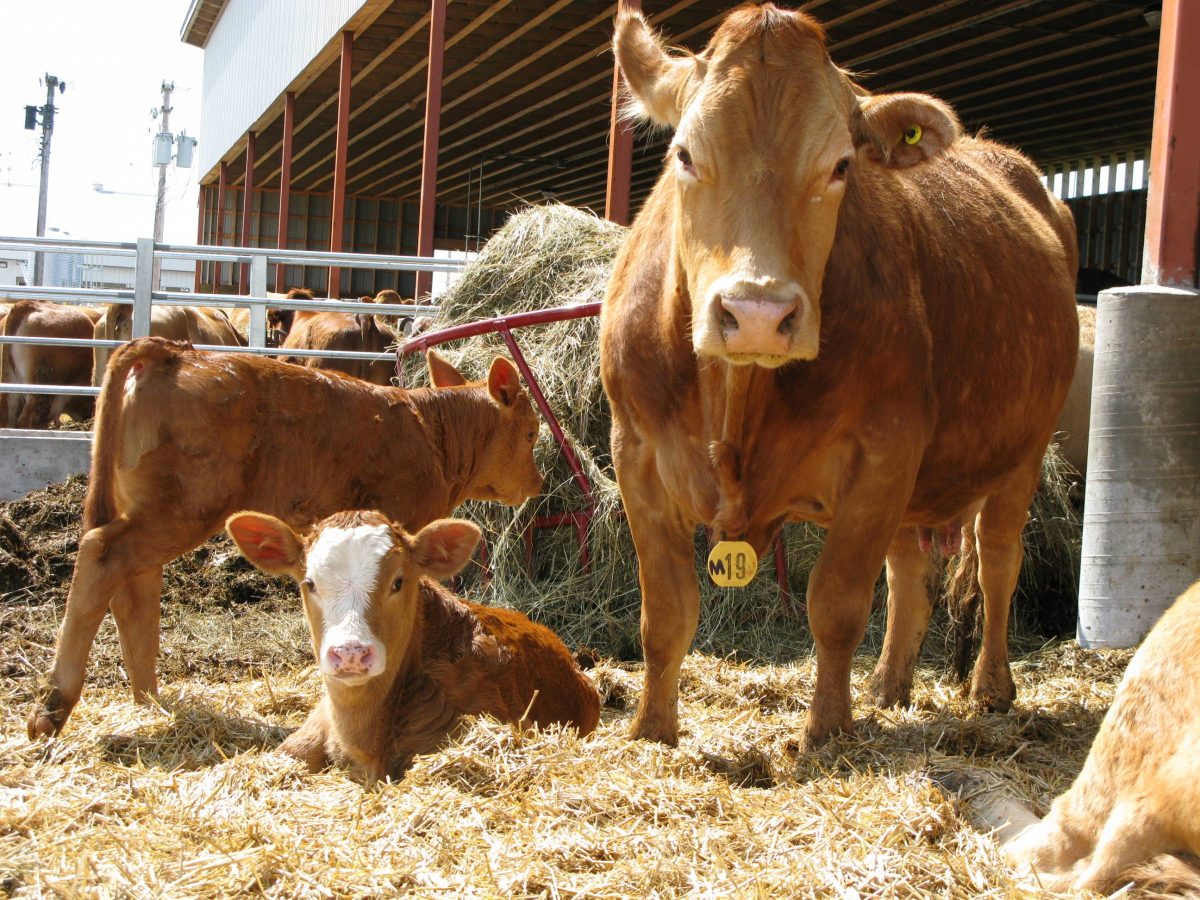
Cattle Country: Manitoba’s Agricultural Crown Grazing Lands – Assessing Potential for Growing the Beef Industry
The following article was written by Peter Frohlich, National Centre for Livestock and the Environment (NCLE), University of Manitoba. It was originally published in Cattle Country in March 2023.
Researchers with the Department of Animal Science at the University of Manitoba have taken a closer look at the current productivity of agricultural Crown lands (ACL) in Manitoba for grazing. The new research has determined that unclaimed productivity within these areas can be economically valuable to producers, thereby supporting the strategies and goals outlined in the Manitoba Protein Advantage strategy. A stated goal of the strategy is to achieve a 15 per cent increase in the productivity of ACL and privately-owned grassland and forages.
Manitoba is the third largest producer of beef in Canada with approximately 430,000 head of cattle, roughly 12% of the total Canadian herd. Cow-calf operations dominate Canadian beef enterprises and in Manitoba raising calves for future sale is the leading form of beef production. During summer and shoulder seasons, these animals rely primarily on forage grazed from pasture lands. Agricultural Crown lands provide an important forage resource for producers in Manitoba.
Current Agricultural Crown Land Leasing System
Agricultural Crown lands in Manitoba are leased from the province through a provincial program. In 2019, 1,750 leaseholders used 1,450,000 acres of ACL in Manitoba, which are used by nearly 90,000 animals during the grazing season.
To allocate the number of animals per area, the provincial government uses a measurement called animal unit months (AUM) to measure carrying capacity, which considers grassland productivity and animal requirements. Carrying capacity is critical to establish and regulate sustainable stocking rates and to prevent overgrazing, which can lead to grassland degradation.
Currently, blocks of agricultural Crown land are assessed for carrying capacity when they are released for the lease auction. Based on today’s practices, 95% of leased grasslands are assessed for carrying capacity every 15 years, potentially leaving room for error when estimating carrying capacities in the middle of the lease period, possibly leading to over or under grazing on pastures with outdated assessments. What is needed is a system that will allow for annual, continual measurements of carrying capacity to ensure that agricultural Crown lands provide the most optimized productivity capacity for producers.
Remote Sensing Techniques: What are they and how do they work?
Animal Science researchers at the University of Manitoba led by Bryan Encabo and Marcos Cordeiro have recently completed a unique project that for the first time in Manitoba utilized digital datasets derived from satellite images. These datasets were used to estimate forage yields and more effectively calculate carrying capacity and stocking rates of agricultural Crown lands in Manitoba. Other analyses enabled by these datasets and planned for future research include assessments of carbon stocks and biodiversity in grasslands, which highlight the role on the beef industry in promoting these ecosystems services across these landscapes in Manitoba.
Forage yield can quickly be estimated over large land areas using these datasets. The University of Manitoba team used the Manitoba Grassland Inventory (MGI) funded by Manitoba Agriculture to estimate forage yield. The MGI is a land cover dataset recently produced from satellite images to gain information on vegetation types and other land cover classes. The MGI data was collected for each Crown land parcel in Manitoba and summarized using geographic information system software that allowed the researchers to map grassland distribution from these digital images.
In addition, field survey data from ARD’s Forage Benchmarking project using a twice over grazing system was used, as well as data from different Agriculture and Agri-Food Canada surveys, such as the Living Labs project, which examined productivity of a rotational and grazing system. The grassland maps and productivity data were then combined to estimate carrying capacity.
To ensure the study examined the whole picture, the research team included an analysis of soil types and long-term weather conditions for each parcel using data from Environment and Climate Change Canada.
The Bottom Line: Project Findings and Benefits to the Industry
Using this wealth of information, UM researchers found that total potential stocking rates for all agricultural Crown graze lands in Manitoba were 1.8 times more then the existing stocking rates allowed for by the current provincial leasing program. One of the reasons for this is because higher than average carrying capacities were reported in ecoregions with larger proportions of semi-arid grasslands, which are better utilized by cattle than forage found in in shrub and forested regions.
This research suggests there is potential to increase the stocking rates of agricultural Crown lands, leading to higher liveweight gains produced per hectare while improving efficiency, productivity and sustainability of agricultural Crown grazing lands. Additionally, producing more protein using a smaller or similar sized geographical area and lowering the carbon footprint are important targets put forward by the Manitoba Protein Advantage strategy.
Interpreting the Findings
The study acknowledges that further refinements and validation of the results are needed through updated forage yield sampling data with a wider provincial coverage to reflect the rapidly changing climate. Updates on the sampling data should follow a standardized ground-truthing protocol with a refined vegetation classification system. Changes in carrying capacity should also take into consideration extreme weather events such as droughts and floods, challenging conditions experienced by producers in 2020 and 2021. These extreme conditions are not reflected in the analysis due to the use of baseline forage data without taking account extreme climate scenarios.
Through this study, the University of Manitoba research team is providing tools to ensure Manitoba is continuing to grow the livestock sector and continue to improve economic and environmental outcomes on farms and across the Manitoba beef industry.
For more information on this project please contact: Marcos Cordeiro (Marcos.Cordeiro@umanitoba.ca)






